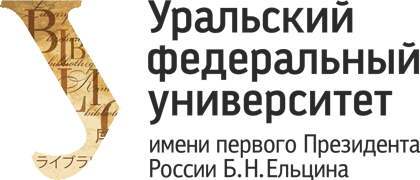“The Spirit of the Moment”. Vrubel’s Demons: Impulse and Construction
DOI:
https://doi.org/10.15826/qr.2019.2.383Keywords:
Demon; infernal being; demonism in ancient culture; M. Vrubel’s art; European painting between 1870 and 1900Abstract
This article analyses the demonic in M. Vrubel’s art in the context of the “morbid phantasms” of European art in the last third of the nineteenth century. The authors argue that between 1870 and 1900, the traditional iconography of infernal beings created in religious art ceased to be relevant for European painting; the usual methods no longer worked. As paradoxical bodily structures and an emphasis on the heterogeneity of the parts of infernal creatures were part of a longstanding tradition, nineteenth-century painters could not ignore the heritage of antiquity. Only by combining folklore elements, literary plots, types of mass culture, and individual preferences (i. e. dreams and nightmares) was it possible to create an eclectic image of a monster sewn hastily from diverse parts (dismembered corpses), much like Frankenstein’s creation. Consequently, artists willing to create an image of a classic (ancient) monster had to express its fatality (fatal force), sensuality (femininity), featurelessness (invisibility), and suddenness (elusiveness). Vrubel persistently and consistently developed a programme where “the spirit of the moment” (as A. Losev called the ancient demon) would appear in all its manifold “beauty”. Vrubel’s Demons are not a series of paintings but a single major work in every sense of the word. The artist implements his creative programme consistently through various plastic solutions, but the orderly phases of work (which took the artist years to complete) were interrupted by flashes of spontaneous creativity. This impulse in Demons appears to be dialectically opposed to the project. A synthesis of these bases is what determines the originality of Vrubel’s programme, which became an authentic embodiment of the very idea of the demonic in its Hellenistic, ancient, and Christian forms.
References
Burton, R. (2005). Anatomiya Melankholii [The Anatomy of Melancholy] / transl., ed. by A. G. Inger. Moscow, Progress-Traditsiya. 832 p.
Durylin, S. N. (1948). Vrubel’ i Lermontov [Vrubel and Lermontov]. In Literaturnoe nasledstvo. Vols. 45–46. M. Yu. Lermontov. Moscow, Izdatel’stvo Akademii nauk SSSR, pp. 541–622.
Eco, U. (Ed.). (2007). Istoriya krasoty [History of Beauty] / transl. by A. Sabashnikova. Moscow, Slovo. 440 p.
Fedorov-Davydov, A. A. (1968). Mikhail Aleksandrovich Vrubel’ [Mikhail Alexandrovich Vrubel]. Moscow, Iskusstvo. 43 p.
Gnedich, P. P. (2004). Istoriya iskusstv: Zodchestvo. Zhivopis‘. Vayanie v 3 t. [History of Art. Architecture. Painting. Sculpture. 3 Vols.]. Moscow, OLMA-Press. Vol. 3. 640 p.
Gomberg-Verzhbinskaya, E. P. (Ed.). (1963). Mikhail Aleksandrovich Vrubel’. Perepiska. Vospominaniya o khudozhnike [Mikhail Aleksandrovich Vrubel. Letters. Memoirs about the Artist]. Leningrad, Moscow, Iskusstvo. 430 p.
Korovin, K. A. (2010). “To bylo davno… tam… v Rossii…”. Vospominaniya, rasskazy, pis’ma v 2 kn. [“It Was a Long Time… there… in Russia…”. Memoirs, Stories, Letters. 2 Books]. Moscow, Russkii put’. Book 2. 870 p.
Losev, A. F. (1980). Grecheskaya mifologiya [Greek Mythology]. In Tokarev, S. A. (Ed.). Mify narodov mira. Entsiklopediya v 2 t. Moscow, Sovetskaya entsiklopediya. Vol. 1. A – K, pp. 321–334.
Rozanov, V. V. (1994). Sobranie sochinenii v 30 t. [Collected Works. 30 Vols.]. Moscow, Respublika. Vol. 1. Sredi khudozhnikov. 494 p.
Sarab’yanov, D. V. (1980). Russkaya zhivopis’ XIX veka sredi evropeiskikh shkol [19th-Century Russian Painting among the European Schools]. Moscow, Sovetskii khudozhnik. 494 p.
Sedlmayr, H. (2008). Utrata serediny [The Lost Centre]. Moscow, Progress-Traditsiya. 640 p.










